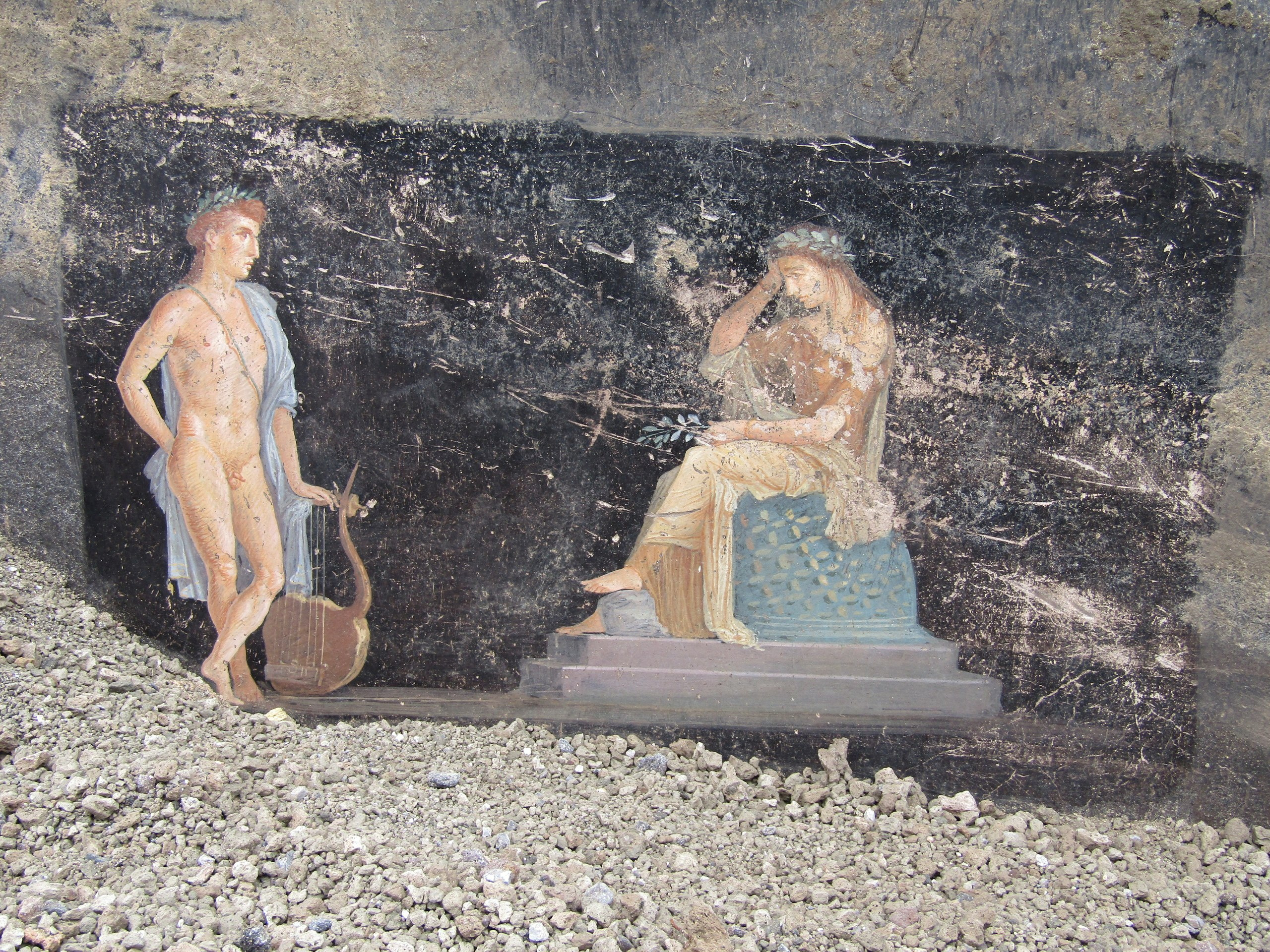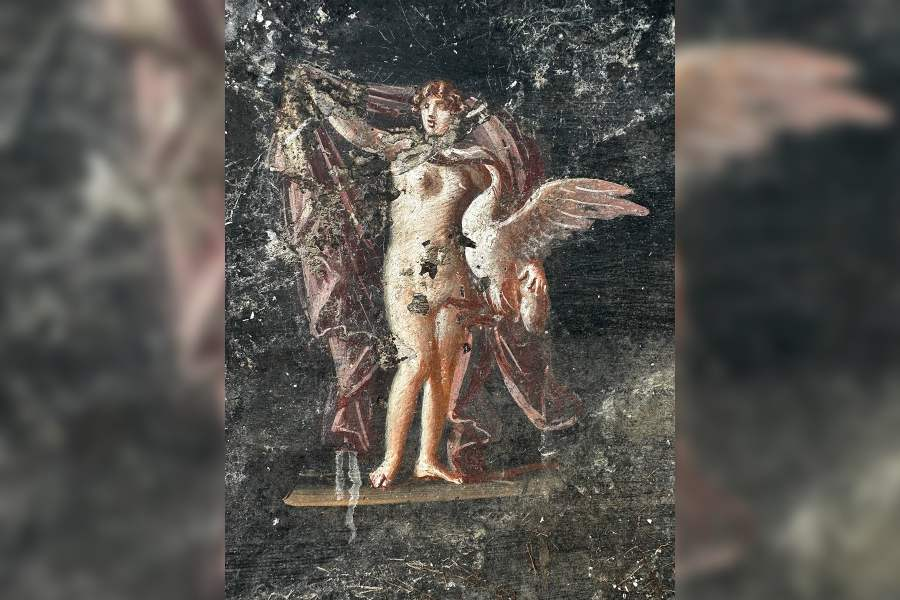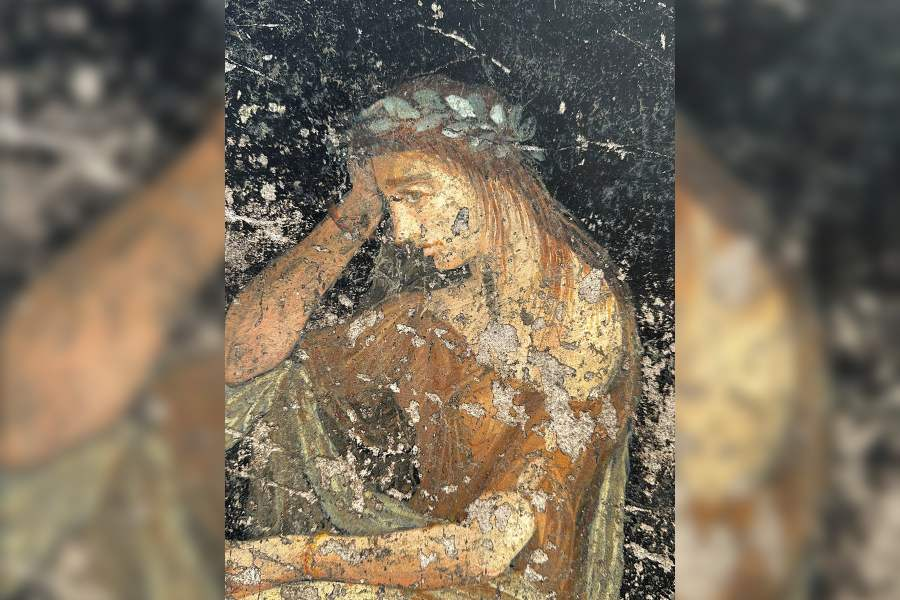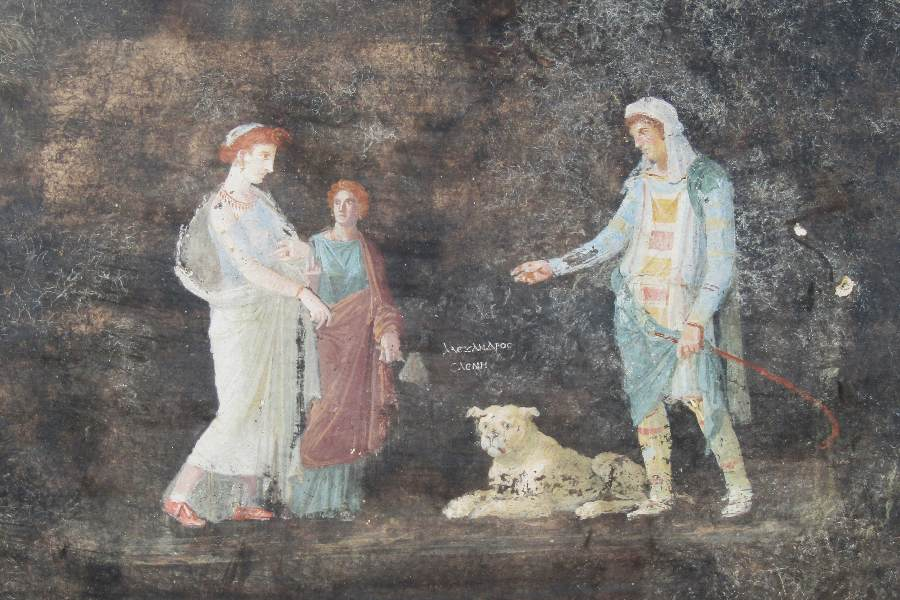In a captivating revelation, archaeologists at Pompeii have unearthed a treasure trove of mythological frescoes adorning a formal dining room, shedding light on the opulent lifestyles of the city’s affluent inhabitants.

Rendered in striking black to prevent candle smoke from tarnishing their beauty, the walls of this newly discovered dining enclave are adorned with intricate panels depicting figures intertwined with tales of the Trojan War.
This remarkable find is part of an ongoing excavation effort within Pompeii, aimed at fortifying the site’s perimeter and safeguarding its legacy for future generations.
Gabriel Zuchtriegel, director of the archaeological park of Pompeii, offers a glimpse into the past: “As the sun set, patrons would gather in this elegant space, illuminated by the gentle glow of oil lamps. The flickering light lent an illusion of movement to the painted scenes, fostering lively discussions fueled by the fine wines of Campania.”
Among the mythological couples gracing the walls are Helen of Troy and Paris, immortalized alongside her parents, Leda and Zeus, whose union is famously depicted with Zeus taking the form of a swan. Across the room, the prophetic Cassandra and Apollo stand as poignant reminders of fate’s inexorable grip.

Evidence suggests that this dining room was part of a structure undergoing restoration when Mount Vesuvius unleashed its fury in 79 AD, burying Pompeii beneath layers of ash and pumice. Zuchtriegel speculates that seismic activity preceding the eruption may have prompted the renovation efforts.
Adjacent chambers yield further insights into ancient life, with discoveries ranging from stacked roof tiles to electoral inscriptions hinting at the political dynamics of the time. Notably, a fresco depicting what appears to be an early precursor to pizza hints at the culinary preferences of Pompeii’s denizens.

Painted in the distinctive Third Style, popular during Pompeii’s heyday, these frescoes bear traces of ancient restoration, testament to the enduring legacy of this vibrant city.
As excavation efforts continue, the dining room remains off-limits to the public, shrouded in anticipation of further revelations. Zuchtriegel reflects, “The allure lies in the unknown. With each excavation, we unravel more of Pompeii’s captivating tale, preserving its legacy for generations to come.”






